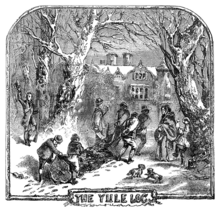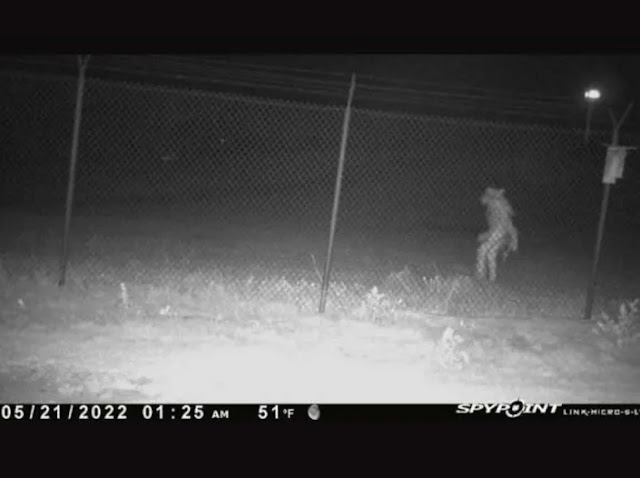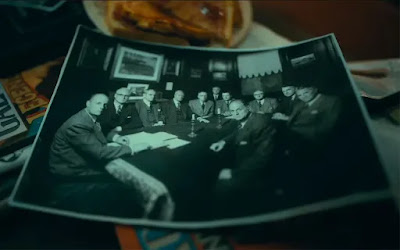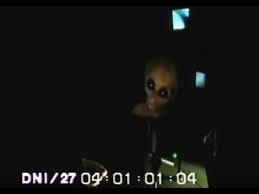Frau Perchta
Frau Perchta was also known as Berchta, or Bertha, and has also been called “Spinnstubenfrau” or “Spinning Room Lady.”
She is often depicted with a beaked nose made of iron, dressed in rags, sometimes carrying a cane, and usually resembles a old woman.
In some descriptions, she has two forms; she may appear as either a beautiful young woman with skin and hair as white as snow, or as elderly and haggard.
In the Tyrol she appears as little old woman with a very wrinkled face, bright lively eyes, and a long hooked nose; her hair is disheveled, her garments tattered and torn.
In many old descriptions, Perchta had one large foot, sometimes called a goose foot or swan foot.
Grimm thought the strange foot symbolized her being a higher being who could shapeshift to animal form. He noticed that Bertha with a strange foot exists in many languages (Middle German "Berhte mit dem fuoze", French "Berthe au grand pied", Latin "Berhta cum magno pede", Italian " Berta dai gran piè", title of a medieval epic poem of Italian area): "It is apparently a swan maiden's foot, which as a mark of her higher nature she cannot lay aside...and at the same time the spinning-woman's splayfoot that worked the treadle".
Perchta had many different names depending on the era and region: Grimm (The Brothers Grimm) listed the names Perahta and Berchte as the main names
followed by Berchta in Old High German, as well as Behrta and Frau Perchta.
In Baden, Swabia, Switzerland and Slovenian regions, she was often called Frau Faste (the lady of the Ember days) or Pehta or 'Kvaternica',
in Slovene. Elsewhere she was known as Posterli, Quatemberca and Fronfastenweiber.
Percht and other variations, was once known as a goddess in Alpine paganism in the Upper German and Austrian regions of the Alps. Her name may mean
"the bright one" Perchta may also come from an Old High German verb pergan, meaning "hidden" or "covered
She also bears a resemblance to the Scandinavian goddess Frigga, and both of them share a common trait: spinning, specifically, and domestic neatness general.
Other legends equate Frau Perchta with the legend of the Wild Hunt, and say that she flies through the night sky followed by an army of lost souls, including the demonic-looking Perchten, her army of servants who are almost identical in appearance to Krampus.
The only difference is that Krampus rides abroad at St. Nicholas Eve while the Perchten travel closer too Epiphany, and the last three Thursdays before Christmas, also known as Berchtl nights or Knocking nights.
Also among her army of the night are the souls of unbaptized children. Legend has it if you hear the wind and thunder roaring and rumbling through the mountains on the Berchtl nights, you’re really hearing the sounds of Perchta leading the Wild Hunt.
Another one of Frau Perchta’s names is Holle, a winter goddess who’s name means “shining” or “bright” — hence her association with Epiphany, the “Shining Night” on which the star of Bethlehem shone down.
Her dual nature is expressed in the fact that there are both “Evil” or “Ugly” Perchten and “Pretty” Perchten, both of whom you might find in a typical “Perchtenlauf” or Perchten run in the Alpine regions of Europe.

In Austria, particularly Salzburg, where she is said to wander through Hohensalzburg Castle in the dead of night, the Perchten are still a traditional part of holidays and festivals (such as the Carnival Fastnacht). The wooden masks made for the festivals are today called Perchten.
In the Pongau region of Austria large processions of Schönperchten ("beautiful Perchten") and Schiachperchten ("ugly Perchten") are held every winter.
Beautiful masks are said to encouraging financial windfalls, and the ugly masks are worn to drive away evil spirits.
Other regional variations include the Tresterer in the Austrian Pinzgau region, the stilt dancers in the town of Unken, the Schnabelpercht or Schnabelperchten ("trunked Percht") in the Unterinntal region and the Glöcklerlaufen ("bell-running") in the Salzkammergut.
A number of large ski-resorts have turned the tradition into a tourist attraction drawing large crowds every winter.
In southern Austria, in Carinthia there is a male form of Perchta called Quantembermann, in German, or Kvaternik, in Slovene (the man of the four Ember days).
Grimm thought that her male counterpart or equivalent is Berchtold.
Regional variations of the name include Berigl, Berchtlmuada, Perhta-Baba, Zlobna Pehta, Bechtrababa, Sampa, Stampa, Lutzl, Zamperin, Pudelfrau, Zampermuatta and Rauweib.
Perchta was the upholder of cultural taboos, such as the prohibition against spinning on holidays.
In Bavaria and Austria folklore, Perchta was said to roam the countryside at midwinter, and to enter homes during the twelve days between Christmas and Epiphany (especially on the Twelfth Night).
She would know whether the children and young servants of the household had behaved well and worked hard all year.
If they had, they might find a small silver coin the next day, in a shoe or pail.
If they had not, she would slit their bellies open, remove their stomach and guts, and stuff the hole with straw and pebbles.

She is manly focused on whether or not girls had spun the whole of their allotted portion of flax or wool during the year.
She would also slit people's stomachs open and stuff them with straw if they ate something on the night of her feast day, other than the traditional meal of fish and gruel.
There was even a cult dedicated to Perchta, the followers would leave food and drink's for Frau Percht and her followers in the hope of receiving wealth and good fortune, it was later condemned in Bavaria in the Thesaurus pauperum (1468) and by Thomas Ebendorfer von Haselbach in De decem praeceptis (1439).
Later canonical and church documents characterized Perchta as synonymous with other leading female spirits: Holda, Diana, Herodias, Richella and Abundia
According to Jacob Grimm and Lotte Motz, Perchta is Holda's southern cousin or equivalent, as they both share the role of "guardian of the beasts" and appear during the Twelve Days of Christmas, when they oversee spinning.
Grimm says Perchta or Berchta was known "precisely in those Upper German regions where Holda leaves off, in Swabia, in Alsace, in Switzerland, in Bavaria and Austria."
Perchta is a "rewarder of the generous, and the punisher of the bad, particularly lying children".

















%20tagme_(artist)%20talulah_(arknights).jpg)




















